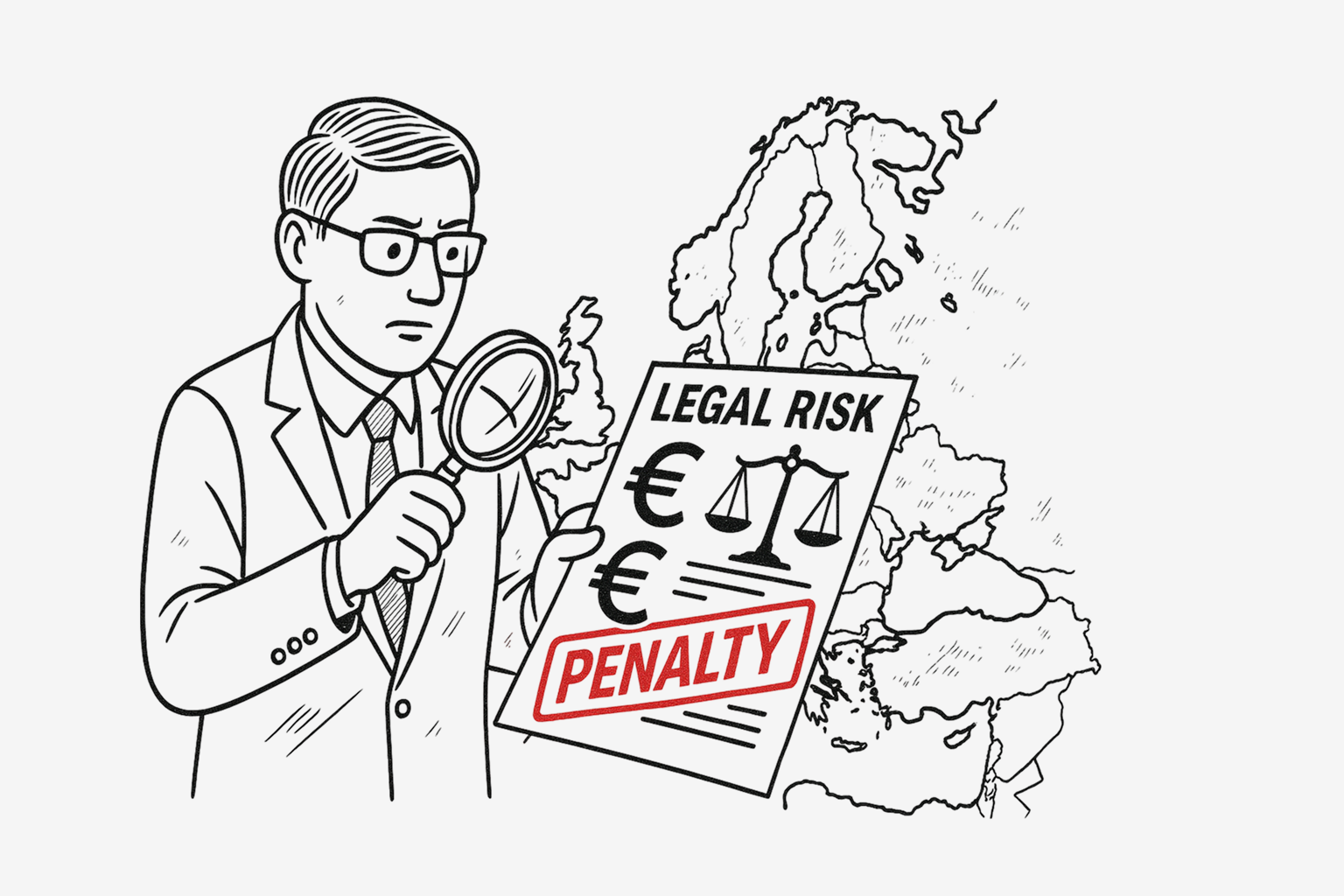Understanding the Fines: The Real Cost of EU CRA Non-Compliance
The European Union’s Cyber Resilience Act (CRA) is an upcoming piece of legislation that permanently shifts responsibility for cybersecurity risk to manufacturers, importers, and distributors of products with digital elements (PDEs)—a definition that encompasses all IoT devices.
If you're managing product security or compliance, understand this: the CRA isn't some abstract theory. It's a powerful, legal framework that comes with serious, punitive fines designed to be effective, proportionate, and, above all, stop you from non-compliance.
Failure to meet the CRA’s comprehensive requirements poses far more than just a reputation risk. It threatens market access and the financial health of the organization. Here is an in-depth look at the potential penalties and legal risks associated with non-compliance.
The Tiered Fine System: Similar to GDPR
The CRA introduces a tiered system of fines, directly mirroring those of the GDPR. These fines are tied to the nature of the violation, the most serious failures—those that compromise core security—carry the highest price tag:
| Infringement Category | Maximum Administrative Fine |
|---|---|
| Highest Tier: Failure of Core Security | €15 Million or 2.5% of total worldwide annual turnover (whichever is higher) |
| Applies to non-compliance with Essential Cybersecurity Requirements (Annex I), and core manufacturer obligations (e.g., security-by-design, risk assessment, and support periods). | |
| Middle Tier: Failure of Organizational Diligence | €10 Million or 2% of total worldwide annual turnover (whichever is higher) |
| Applies to non-compliance with 'other obligations,' which includes crucial areas like vulnerability handling processes, adequate documentation, and cooperation with authorities. | |
| Lowest Tier: Administrative Errors | €5 Million or 1% of total worldwide annual turnover (whichever is higher) |
| Applies to providing false, incomplete, or misleading information to notified bodies or market surveillance authorities. | |
Even the lowest tier, “Administrative Errors” -fine, is significant and is applied when for example test results are missing or falsified: Providing a Notified Body with testing reports or security audit results that have been altered to remove negative findings or show a "pass" when the product failed to meet a core security requirement or simply misrepresenting the security posture in technical documentation.
What the CRA’s Highest Fines Mean in Practice:
The €15 Million / 2.5% fine is reserved for failures in the fundamental Essential Cybersecurity Requirements. For a large IoT company, 2.5% of global revenue can be a substantial figure, potentially well beyond the maximum fixed fine.
This top tier specifically targets failures in:
Security-by-Design and Default: Products must be developed to ensure an appropriate level of cybersecurity from the start.
Vulnerability Remediation: The continuous obligation to fix and provide security updates throughout the product’s expected lifecycle.
Secure Configuration: Failure to ship products with secure-by-default settings.
If a major vulnerability leads to a breach, and an investigation finds that the manufacturer failed to implement encryption (an Annex I requirement) or provide timely patches (a core obligation), the company immediately faces the maximum penalty tier.
Beyond the Financial Fines: The Legal and Commercial Fallout
The CRA's power extends far beyond monetary penalties. Market surveillance authorities have a suite of enforcement tools that pose an existential threat to your products in the EU market.
1. Prohibition, Withdrawal, and Recall
The most immediate and damaging non-financial penalty is the power of authorities to prohibit or restrict the sale of a non-compliant product on the EU market.
Market Ban: Products lacking the required CE marking (proof of CRA conformity) cannot be placed on the market.
Withdrawal/Recall: If a product already on the market is deemed non-compliant or presents a significant cybersecurity risk, authorities can order its immediate withdrawal from sale or even a product recall from end-users.
A continent-wide recall of millions of IoT devices would result in operational chaos, massive logistics costs, and immediate revenue loss, making the direct financial fine secondary to the commercial disaster. It is worth to note that all existing products on the market, no matter at what stage of the lifecycle they are, must be compliant.
2. Increased Legal Liability Exposure
The CRA significantly raises the bar for liability:
Product Liability Directives: Compliance failures under the CRA will be crucial evidence in product liability lawsuits. If a non-compliant IoT device is used as an attack vector that causes material damage to a customer's business or personal data, the lack of CRA conformity makes defending a claim for damages very challenging.
GDPR Overlap: Many IoT devices process personal data. A security flaw that violates the CRA will almost certainly constitute a breach of the GDPR. This means a single incident could trigger dual enforcement actions and fines under both regulations—potentially compounding the financial risk dramatically.
3. Reputational Damage and Loss of Trust
Regulatory enforcement actions are often public.
Public Scrutiny: An administrative order, product ban, or major fine will generate negative press, immediately eroding the customer trust that is essential for B2B and B2C sales.
Loss of CE Mark: The inability to affix the CE mark—a mandatory stamp of compliance—is a clear visual signal of regulatory failure, which can stop sales, particularly for importers and distributors who rely on that mark for customs clearance.
The Compliance Officer’s Mandate: Act Now
The CRA’s full application takes effect on December 11, 2027, but a critical early deadline looms: September 11, 2026, is the date when the vulnerability and incident reporting obligations come into force.
So in less than a year, your entire portfolio of products must be managed properly for vulnerabilities.
You cannot afford to wait. The shift to proactive compliance—automating security assessments, extending the security assessments to products’ lifecycles, and establishing a robust vulnerability disclosure program—is the way to safeguard your organization's position in the market. Your strategy must reflect that compliance is no longer a check-box; it is continuous risk mitigation. If you want to hear more about how to automate security assessments with Test of Things, please book a free consultation call and demo.

